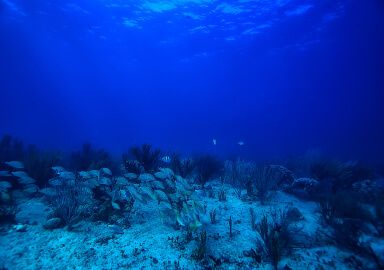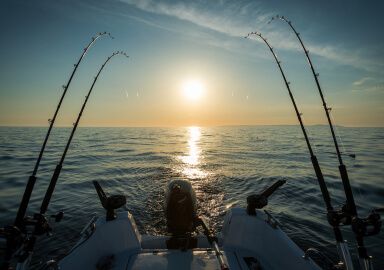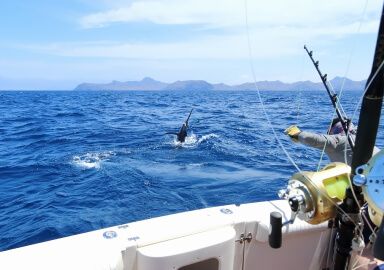Rainbow Runner
The most exciting bycatch of tropical waters, the rainbow runner is famous for its vivid colors, aggressive strikes, and makes an excellent eating!
View 13 listings
13
listings
–
price starting from
7
countries
–
to the nearest trip
Where and When?
Rainbow runners are found in tropical and subtropical regions of the Atlantic, Pacific, and Indian Oceans, making them a truly global species. They are known to follow currents and can often be found near the edge of continental shelves. In the Atlantic, they can be found from the southern United States down to Brazil, while the Indo-Pacific range extends from the coasts of Africa to Hawaii and Japan.
Prime fishing destinations for rainbow runners include Florida, the Caribbean Sea, the Gulf of Mexico, and the Pacific coast of Central America, as well as places like the Maldives and the Great Barrier Reef in Australia. Rainbow runners can be caught year-round in tropical regions, but the best season is typically in the warmer months, from late spring to early fall, when their activity peaks
About Rainbow Runner
The rainbow runner (Elagatis bipinnulata) is a strikingly colorful, torpedo-shaped fish found in warm ocean waters around the globe. Though part of the jack family, their long, slender body is more reminiscent of mackerel. True to its name, the rainbow runner displays vibrant hues of blue, green, and yellow. The back is usually a brilliant blue, fading to green along the sides, and featuring two bright yellow stripes running from head to tail, with a white or silver belly.
Rainbow runners are known for their aggressive feeding habits and often swim in schools, hunting for squid, small fish, and plankton. They are closely associated with structures like reefs and floating debris, where prey is abundant. Despite their streamlined appearance, they are strong fighters when hooked, making them a favorite among sport anglers.
Most rainbow runners caught by anglers weigh between 5 and 15 pounds, although larger specimens of over 30 pounds have been recorded. They spawn in the summer, but in the warmer parts of the ocean spawning can take place all year. Smaller rainbow runners are often used for bait when fishing for the biggest fish of the ocean, like tuna or marlin. The fish is also prized for its firm, flavorful flesh, which is excellent grilled or served as sashimi.
How to Catch?
Rainbow runners are usually a bycatch for fishing charters, but deserve more attention from sport fishers due to their speed, strength, and exciting fight. These fish prefer open, clear waters around reefs, drop-offs, and fish-aggregating devices (FADs), often schooling near the surface. The most common method to catch them is trolling with small to medium-sized lures or natural baits like squid and fish strips. High-speed trolling is particularly effective, as rainbow runners are fast swimmers that readily strike moving baits.
When casting, use light to medium spinning tackle with topwater lures, jigs, or spoons, as rainbow runners are often found near the surface. These fish are known to school, so once you hook one, there’s a good chance for more action with the rest of the school. Chumming can also help attract schools closer to the boat.
Rainbow runners are often found near reefs, FADs, or floating debris, so keep an eye out for structure. They also respond well to live bait, such as sardines or mackerel, especially when drift-fishing near a reef or in blue water areas. Whether you’re targeting rainbow runners for their colourful appearance, their spirited fight, or their tasty filets, this species promises plenty of action on the line and a rewarding catch for anglers of all levels.





